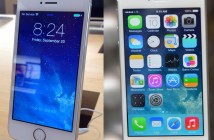The HTC EVO 4G was a pretty successful device when it first launched on the Sprint network in the US. The big 4.3 inch display, coupled with support for WiMAX (a first for the US market at that moment), made it an excellent choice for people who want to browse the Web comfortably on the go without sacrificing the portability of a smartphone.
And now, half a year later, we get its younger brother, the EVO Shift 4G, which a lot of people say is the successor, but I don’t think that is true. I believe the EVO Shift 4G is meant to be sold along with the EVO 4G or its real successor, and Sprint wants to cover all the potential markets they can.
There is a noticeable difference between the EVO 4G, which is basically a big screen full touch smartphone, and the new Evo Shift 4G, a device with a slide out QWERTY keyboard and a smaller 3.6 inch display, but you can definitely see that HTC has used the first one as a base for the updated model, and the result is a better smartphone that covers a much wider range of users.
On the outside
The exterior of the Evo Shift has definitely improved over the Evo, with the front panel being made of metal and the back of soft plastic, both of which are very pleasant to the touch and are harder to scratch than the glossy surface of the Evo. The device is smaller overall, of course, and much easier to hold and use with one or two hands. The Evo Shift is thicker at 16 mm, but that is not really a problem and it makes it easier to use with the keyboard open (the Droid for example is so thin when open that it’s hard to use it). The navigation buttons are of the same big round shape and easy to use.
HTC has implemented a D-pad on the QWERTY keyboard for easier navigation in documents, so the Evo Shift gets the best of both worlds – it’s easy to use both when open and closed. The QWERTY keyboard itself seems to be the same one used on the Desire Z – an excellent choice, since it is the best one yet on a smartphone. The keys are big, clicky and sufficiently raised, and there is enough space between them to accommodate any finger size.
Changes in internal hardware
The Evo Shift 4G got the same updated Qualcomm processor as the Desire Z, and that’s definitely a plus since it uses less power and is faster in any applications than the previous Snapdragon at a lower frequency (it runs at 800 MHz, but it can easily be overclocked to 1.2 GHz and more!). The amount of RAM is 512 MB – plenty enough for any applications.
The storage space is on the external micro SD card that you’ll have to buy – The Evo Shift only comes with a 2 GB card, which is definitely not enough, but thankfully you can get a good class 4 16 GB micro SD card for about $50. Of course, the Evo Shift supports WiMAX, HSPA +, Wifi N, Bluetooth 3.0 and any other modern technologies you can think of.
The 3.6 inch display is nothing special, but it gets the job done. It has your usual resolution of 480×800 and can only show 65536 colors, which is a bit of a disappointment, as the Desire Z, for example, got the 200,000 colors 3.7 display, while costing the same price.
There’s a 5 megapixels camera on the back with support for 720p HD video shooting, but strangely, no front camera, which is weird considering the Evo Shift is supposed to be competing with Samsung Epic 4G and Evo 4G, both of which have front cameras for video calling (not to mention that the Evo 4G has a better 8 megapixels unit on the back).
The software
The Evo Shift 4G runs Android 2.2 with the custom HTC Sense skin, which is more of a drawback than benefit right now, since it doesn’t add anything new to the user experience. There will be an update to 2.3 and hopefully 3.0, but don’t hold your breath for the latter. The device comes preloaded with all the usual apps you might need – Facebook, YouTube, Chrome, Gmail and others, but if you don’t like them or need more functionality, you can just go to the marketplace and get the apps you need.
Conclusion
The HTC Evo Shift 4G is definitely a great smartphone (especially since there always seems to be a lack of QWERTY devices) and can compete with other devices in terms of performance, but at the price, there are better alternatives. The Epic 4G, for example, costs the same $149.99 with a contract and has more features than the newcomer, despite being considered older. The T-Mobile G2 is also a better choice for the price, with its bigger, better screen, nice professional design and external optical pad. Still, the Evo Shift is a great choice for those who need WiMAX support and a QWERTY keyboard in a powerful device that will last at least a couple of years.




